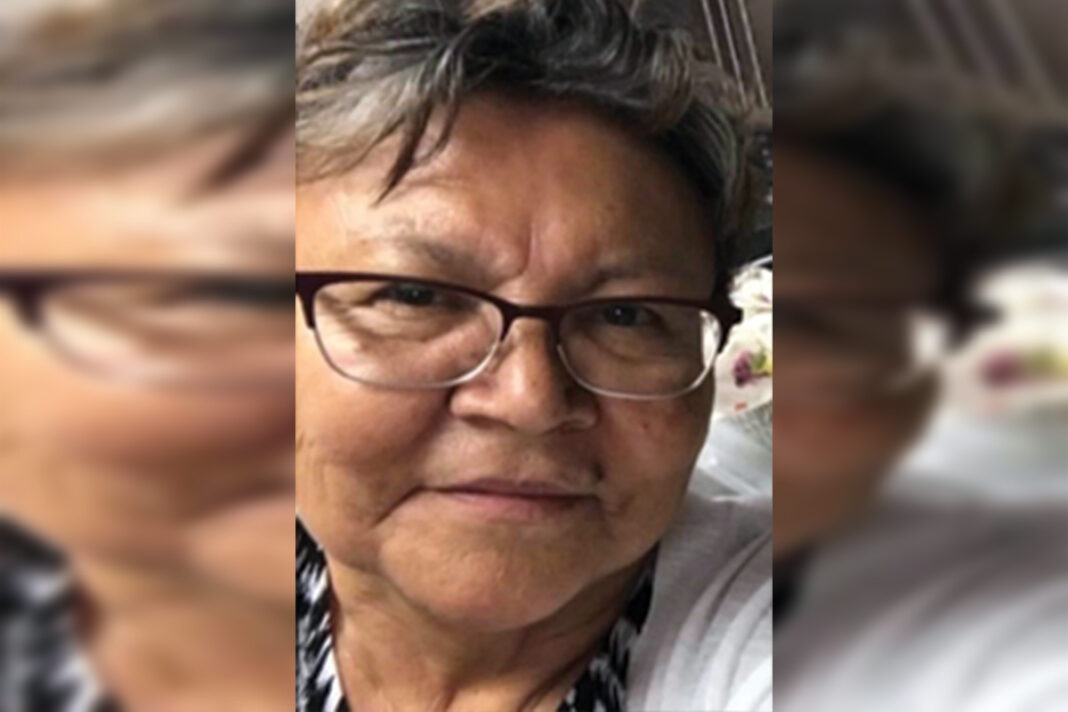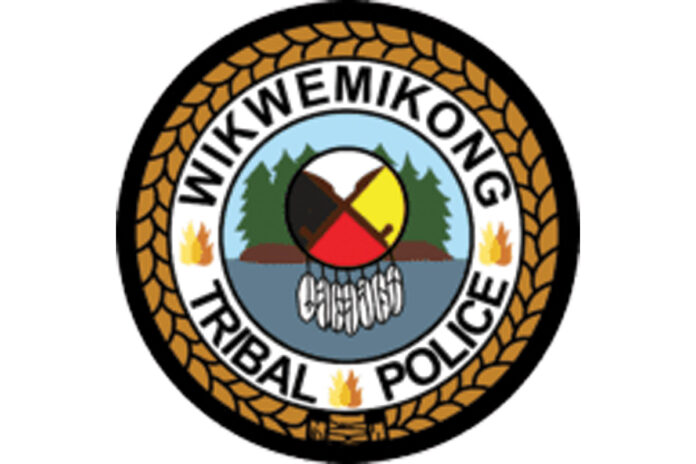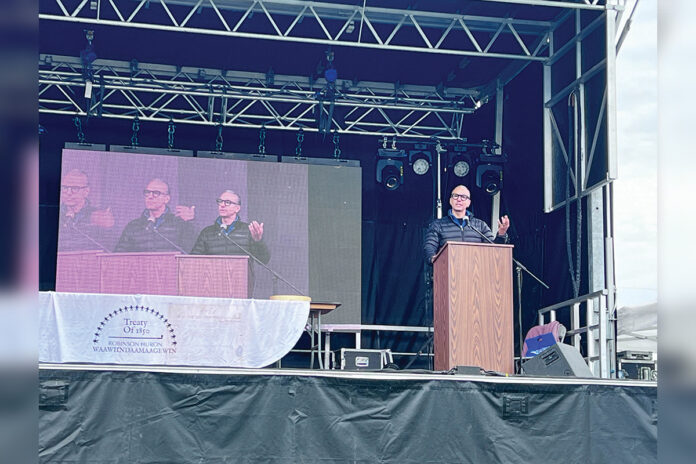WIIKWEMKOONG—Barbara Nolan, a cherished Anishinaabemowin language carrier and linguist originally from South Bay, Wiikwemkoong and who now lives in Garden River, is deeply committed to preserving her language and passing it on to the next generation. She recently embarked on a groundbreaking digital journey to teach Anishinaabemowin through animated videos.
For Ms. Nolan, the videos aren’t just about the language; they’re about the joy of learning. She believes that people of all ages will find them enjoyable, although they are primarily tailored for early learners and daycares.
Ms. Nolan had contemplated creating animated videos for some time, but it wasn’t until she crossed paths with Esbikenh, a teacher from a language immersion school in Bkejwanong (Walpole Island First Nation), that the project started to take shape. Esbikenh recognized the potential of Barbara’s work and generously offered to assist her in producing the videos at no cost.
In January, Ms. Nolan began making trips to the Sarnia area to record her stories. With the help of a green screen, she envisioned herself speaking directly to the children, infusing each session with liveliness and fun.
Esbikenh and his team managed the entire production process, including costumes, editing, creating an animated storyboard, and sending it off for full animation. The initial 10 videos were funded by the Anishinabek Nation, where Ms.Nolan serves as language commissioner, and additional videos are already in progress, thanks to support from Garden River Child and Family Services.
Ms. Nolan’s passion for teaching Anishinaabemowin dates back to her time as a child and family counselor with the Huron Superior Catholic District School Board. At the now-closed St. Hubert’s Elementary School in Sault Ste. Marie, Anishinaabe students faced challenges in their French classes. A student’s simple question, “You speak the Anishinaabe language, why don’t you teach us?” transformed Ms. Nolan’s trajectory. This led her to work with the school principal to develop an Anishinaabemowin curriculum, fueling her enduring dedication to teaching the language.
For Ms. Nolan, the videos aren’t just about the language; they’re about the joy of learning. She believes that people of all ages will find them enjoyable, although they are primarily tailored for early learners and daycares.
Now busier than ever, Ms. Nolan focuses on using immersion techniques in her videos, believing it’s the most effective way to help children—and adults—fully absorb the language. “In immersion, you’re not just learning the language; you’re learning how to live it,” she explained. “You watch and listen to what’s happening, and soon, you understand the message, even if you don’t know all the words yet.”
Ms. Nolan’s commitment to preserving her language is deeply personal. As a survivor of the Spanish Indian Residential School, she witnessed firsthand the tragic loss of language among her peers. Many were punished for speaking Anishinaabemowin and couldn’t pass it on to their children. However, Ms. Nolan was one of the fortunate ones. She was allowed to return home to Wiikwemkoong during the summer and Christmas breaks, where the language was still spoken widely. “We didn’t lose connection with our families, and Anishinaabemowin was everywhere,” she recalled.
In one of the children’s videos, Ms. Nolan shares her own residential school story, a powerful reminder of the resilience of Indigenous languages. “It’s important for kids to know that story,” she said. “We were excited by all the new things at the school, but then our parents slipped away, and we started crying. I want children to understand what happened.”
Ms. Nolan’s videos are more than just lessons—they’re lifelines to a rich cultural history. “If we are to survive as Anishinaabe people, we have to speak our language. It’s what holds us together,” she said with conviction.
She’s also made the deliberate choice not to include English subtitles in her videos. “When you watch cartoons, do they have subtitles?” she asked playfully. “In an immersion setting, you have to look and listen. That’s how you acquire the language—by being engaged and paying attention to the story.”
Ms. Nolan believes the videos are not only for children but for anyone who has a genuine interest in learning Anishinaabemowin. She encourages non-Native people to learn the language too, noting that learning a second language opens doors to a broader understanding of the world. “Once you’ve learned one language, it becomes easier to learn others,” she explained. “And when you learn Anishinaabemowin, you learn about my ancestor’s worldview. You’re broadening your understanding of who we are as a people.”
Teaching the language is about much more than grammar for Ms. Nolan. It’s about connecting people to culture, humour, social skills and the rhythm of everyday life. “We learn context, when to speak and when to listen,” she said. “It’s about acquiring a whole way of being.”
When asked how long she plans to continue making videos, Ms. Nolan chuckled warmly, “For as long as I’m able to! And even when I’m gone, the videos will still be here, for people to enjoy and learn from.”
Ms. Nolan’s work is a gift to the Anishinaabe people and beyond. Through her stories, she is keeping the language—and the spirit of her community—alive for generations to come.






